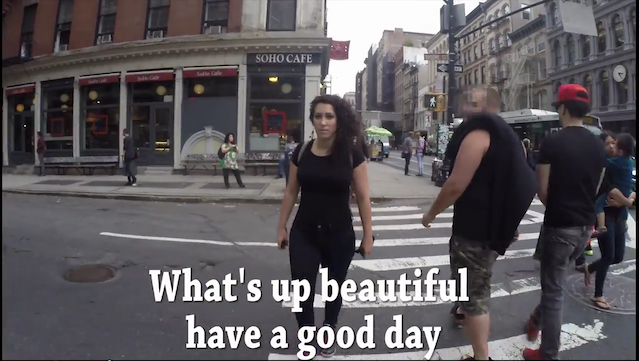In its statement today addressing, among other things, the racial bias characterized in its catcalling video, Hollaback! wrote that it is their "hope and intention that this video will be the start of a series to demonstrate that the type of harassment [Hollaback! is] concerned about is directed toward women of all races and ethnicities and conducted by an equally diverse population of men." The problem here is that harassment is not directed at women equally. The video itself, as well as the subsequent statement, perpetuate the practice of centering white women as universal victims–an American historical practice that leaves the disproportionate violence that women of color face relegated to oblivion.
Nearly 100 years before the United States even came into being, Mary Rowlandson published an account of what would become an 11-week long captivity by Natives in Massachusetts Bay Colony. There’s no doubt that Rowlandson’s ordeal was horrific–she was taken from her home and family during King Phillip’s War and into capture for 11 weeks by Natives whom she repeatedly described as barbaric savages. The irony, however, is that by centering herself as the pure white woman who required protection, Rowlandson conveniently avoided questioning her own presence as an early settler on Native land. She also failed to ever address the racialized ways in which Algonquian women were not only captured, but also raped by white settlers as a practice of war. Rowlandson’s publication became the first bestseller in the Americas–and inscribed the need to protect women from men of color in what would soon become the United States. Not all women, however. Just white ones. Rowlandson’s narrative was one way in which the protection of white womanhood became one of the most American of pastimes.
Several miles south and several centuries later, another white woman has been placed at the center of a narrative about danger at the hands of men of color. Her narrative echoes Rowlandson’s narrative and inspires a similar disgust at the men who harass her–conveniently mostly men of color since the white men were admittedly edited out of the footage. The attention this video has garnered shouldn’t surprise us: Again, the desire to protect white women is one of the most American of pastimes. And, by creating this video, Hollaback! fails to address the racialized way in which women of color–and trans women of color in particular–are not only harassed, but also sometimes killed on the street for daring to exist.
Hollaback! claims that this is the start of a series of videos. It wouldn’t be a novel idea to do so, however. Surveillance video capturing the shooting and killing of a black trans woman in East Hollywood, California, made a few headlines in the Los Angeles area–but remains invisible when compared to the 17 million views (and counting) the Hollaback! video has garnered. The black trans woman who was shot and killed has a name, yet I don’t know it because the story’s been so obscured, it’s disappeared, along with her identity.
Rather than creating new videos that tokenize the reality that women of color face, Hollaback! might do better to think about de-centering whiteness in its analysis. Focusing on white women’s safety doesn’t do much to protect Latina women like me–and it does less to protect black trans women, who face excessive violence in public. Thinking and acting upon ways in which to protect trans women of color, however, automatically makes the rest of us safer by default. Doing so means creating narratives that revolve around the most vulnerable among us.
